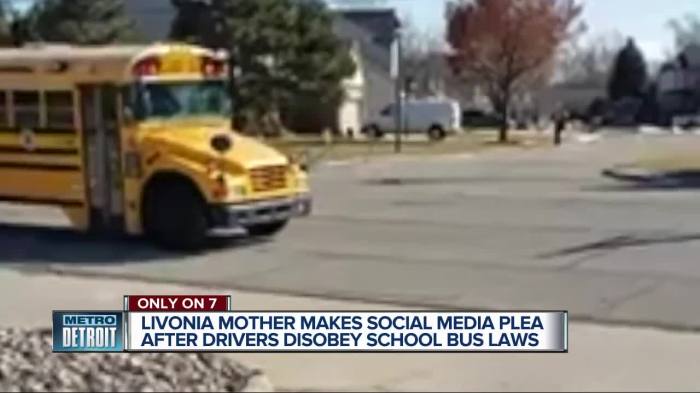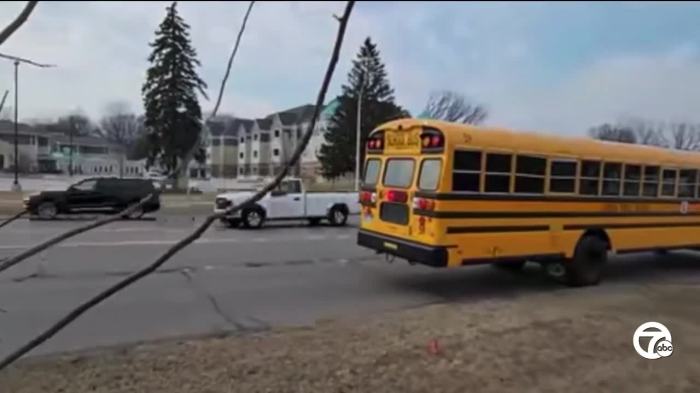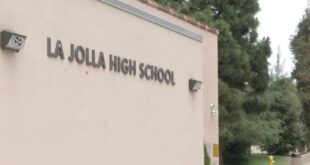Livonia Schools Cancel Bus Routes Due to Driver Shortages: The school district faces a critical challenge as a nationwide shortage of bus drivers forces them to cancel routes, impacting students and families alike. This situation highlights a growing problem in education and transportation, with ripple effects extending far beyond the classroom.
The shortage has created a complex web of issues, forcing school officials to navigate difficult decisions while students and families grapple with the consequences.
This shortage is not unique to Livonia; it’s a nationwide issue impacting school districts across the country. The root causes are multifaceted, including low wages, demanding work schedules, and a lack of qualified applicants. As a result, school districts are struggling to find enough drivers to transport students safely and efficiently, leaving many families scrambling to find alternative solutions.
Impact on Students and Families
The cancellation of bus routes due to driver shortages in Livonia Schools has a significant impact on students and their families. This disruption affects their ability to attend school, placing a heavy burden on families, particularly those with working parents or limited transportation options.
Impact on Students’ Attendance and Academic Performance
The lack of transportation directly affects students’ ability to attend school regularly. This can lead to increased absenteeism, which can negatively impact their academic performance. Students who rely on school buses may struggle to find alternative transportation, leading to missed classes and falling behind in their studies.
Livonia Schools’ Response
Livonia Schools have implemented several measures to address the driver shortage, acknowledging its significant impact on students and families. These strategies aim to attract and retain qualified bus drivers while minimizing disruptions to transportation services.
Strategies Implemented by Livonia Schools
Livonia Schools have taken a multifaceted approach to tackle the driver shortage. The district has increased driver wages, implemented flexible scheduling options, and launched a comprehensive recruitment campaign.
- Increased Driver Wages:Livonia Schools have raised wages for bus drivers to be competitive with other districts and private transportation companies. This strategy aims to attract and retain qualified drivers by offering a more appealing compensation package.
- Flexible Scheduling Options:The district has introduced flexible scheduling options, allowing drivers to choose shifts that best suit their individual needs. This aims to accommodate the diverse lifestyles of potential candidates and improve work-life balance.
- Recruitment Campaign:Livonia Schools have launched a comprehensive recruitment campaign to attract new drivers. This campaign includes online advertising, community outreach events, and partnerships with local organizations to promote driving opportunities within the district.
Effectiveness of Measures and Impact on Students and Families
The effectiveness of Livonia Schools’ measures is still under evaluation. The increased wages have attracted some new drivers, but the district continues to face challenges in filling all open positions. Flexible scheduling options have been well-received by existing drivers, improving retention rates.
The recruitment campaign has shown promising results, but it takes time to build a robust pool of qualified candidates.The driver shortage has caused disruptions to transportation services, leading to delays and cancellations for some students. Families have had to adjust their schedules and find alternative transportation arrangements, creating additional stress and inconvenience.
Livonia Schools have communicated with families regularly about service disruptions and provided alternative transportation options when possible.
Comparison to Other Districts
Livonia Schools’ response to the driver shortage is comparable to other districts facing similar challenges. Many districts have implemented similar strategies, such as increasing wages, offering signing bonuses, and launching recruitment campaigns. The effectiveness of these measures varies depending on the local labor market and the severity of the shortage.
Some districts have also explored innovative solutions, such as partnering with ride-sharing services or using smaller, more fuel-efficient vehicles to reduce the number of drivers needed.
Causes of Driver Shortages: Livonia Schools Cancel Bus Routes Due To Driver Shortages
The nationwide bus driver shortage is a complex issue with several contributing factors. These factors have a significant impact on Livonia Schools, affecting their ability to provide reliable transportation for students.
Impact of Aging Workforce, Livonia Schools cancel bus routes due to driver shortages
The average age of school bus drivers is steadily increasing. Many experienced drivers are reaching retirement age, leading to a decline in the available workforce. This trend is particularly pronounced in Livonia Schools, where a significant portion of the existing driver pool is nearing retirement.
Competitive Job Market
The transportation industry faces intense competition for qualified drivers. Other sectors, such as trucking and delivery services, offer higher salaries and more flexible schedules, making it challenging for school districts to attract and retain drivers. Livonia Schools, like many other districts, struggle to compete with these offers, impacting their ability to recruit and retain drivers.
Licensing and Training Requirements
The process of obtaining a commercial driver’s license (CDL) and completing the necessary training can be lengthy and expensive. This can be a barrier for potential drivers, particularly those with limited financial resources or time commitments. Livonia Schools are actively exploring ways to streamline the licensing process and offer financial assistance to encourage more individuals to pursue a career in school bus driving.
Safety Concerns and Stressful Work Environment
School bus driving can be a demanding job with significant safety responsibilities. Drivers often face long hours, unpredictable schedules, and interactions with challenging students. These factors can contribute to stress and burnout, leading some drivers to leave the profession.
Livonia Schools are committed to creating a supportive and safe work environment for their drivers, offering programs and resources to address stress and promote well-being.
Negative Public Perception
There is a perception that school bus driving is a low-paying, low-status job. This perception can discourage individuals from considering a career in school transportation. Livonia Schools are working to improve the public image of school bus drivers, highlighting the importance of their role in ensuring the safety and well-being of students.
Impact of the COVID-19 Pandemic
The COVID-19 pandemic has exacerbated the driver shortage, leading to increased absenteeism and resignations. The pandemic’s impact on the economy and labor market has made it even more challenging for school districts to attract and retain drivers. Livonia Schools are working to implement strategies to mitigate the impact of the pandemic on their driver workforce, such as offering flexible schedules and providing access to COVID-19 testing and vaccination.
Alternative Transportation Options
With bus routes canceled, students and families need to explore alternative transportation options to ensure they can still get to school. These options vary in cost, accessibility, and safety, and their feasibility depends on individual circumstances.
Transportation Options Comparison
Here’s a table comparing the pros and cons of various transportation options:| Option | Pros | Cons ||—|—|—|| Walking/Biking| Cost-effective, promotes physical activity, can be flexible | Not suitable for long distances, weather dependent, safety concerns in some areas || Carpooling| Shared costs, reduces traffic congestion, promotes community building | Requires coordination and commitment, potential safety concerns, may not be available for all students || Public Transportation| Cost-effective, accessible in many areas, environmentally friendly | Can be time-consuming, may not be directly accessible to all schools, potential delays or overcrowding || Ridesharing Services| Convenient, flexible, available on demand | Can be expensive, may not be reliable in all areas, safety concerns |
Feasibility and Limitations
The feasibility of these options depends on various factors, including:* Distance to school:Walking or biking may be suitable for students living close to school, but not for those living further away.
Safety concerns
Safety is a major concern for all transportation options, especially for younger students. Parents may need to consider walking or biking routes, traffic conditions, and the availability of safe drop-off zones.
Cost
Some options, like ridesharing services, can be expensive, particularly for families with multiple children.
Obtain a comprehensive document about the application of Tenderfoot Bluegrass Band celebrates 20 years with party in Manitou Springs that is effective.
Accessibility
Public transportation may not be readily available or accessible for all students, especially in rural areas.
Time constraints
Public transportation or carpooling can be time-consuming, especially during peak hours.Schools and families need to work together to find solutions that work best for individual students and their families. This may involve exploring alternative transportation options, adjusting school schedules, or providing financial assistance for transportation costs.
Community Impact

The shortage of bus drivers in Livonia has a ripple effect, extending beyond the inconvenience of school transportation. The impact is felt across the community, affecting traffic patterns, safety, and the daily routines of families and businesses.
Increased Traffic Congestion
The absence of school buses on the road has resulted in a noticeable increase in traffic congestion, particularly during peak hours. With more parents driving their children to school, the roads become more crowded, leading to longer commute times and frustration for everyone.
This situation is especially challenging in areas with limited road capacity, where traffic flow can be significantly impacted. For example, the intersection of Eight Mile Road and Newburgh Road in Livonia has seen a notable increase in traffic volume during school drop-off and pick-up times.
Safety Concerns
The heightened traffic congestion also raises safety concerns. Increased traffic density leads to a higher risk of accidents, especially in areas where pedestrians and cyclists share the road. The absence of school buses, which typically have a safety record of lower accident rates compared to other vehicles, further adds to these concerns.
The Livonia Police Department has reported a slight increase in minor accidents in areas surrounding schools since the implementation of the reduced bus routes.
Perspectives of Parents, Community Members, and Local Businesses
Parents have expressed concerns about the added burden of transporting their children to and from school, especially for families with multiple children or those with busy schedules. Some parents have reported having to adjust their work hours or rely on childcare arrangements due to the lack of reliable bus service.
Community members have also voiced their worries about the increased traffic and safety hazards. Local businesses, particularly those near schools, have reported a decrease in foot traffic during school hours due to the reduced number of students commuting by bus.
Closing Summary

The driver shortage in Livonia, like many other districts, underscores the need for creative solutions and a collaborative approach. Addressing the root causes, such as improving wages and benefits, could help attract and retain qualified drivers. In the meantime, school districts must work with families to ensure students have access to education, even in the face of these challenges.
The situation calls for innovative thinking and a commitment to finding long-term solutions to this critical issue.
Questions Often Asked
What are the immediate consequences of canceled bus routes?
Students who rely on bus transportation may be unable to attend school, leading to increased absenteeism and potential academic difficulties. Families with working parents may face challenges finding alternative transportation arrangements, creating a burden on their time and resources.
How are Livonia Schools addressing the driver shortage?
Livonia Schools are implementing a variety of strategies to address the shortage, such as offering sign-on bonuses, increasing wages, and adjusting work schedules. They are also exploring partnerships with transportation companies and working with local organizations to recruit potential drivers.
What are the potential long-term consequences of the driver shortage?
The long-term consequences of the driver shortage could include a decline in student attendance and academic performance, a widening gap in educational equity, and increased strain on families and the community.
What alternative transportation options are available for students?
Families can explore options like carpooling, walking, biking, and public transportation. Livonia Schools may also offer alternative transportation arrangements, such as designated pick-up and drop-off locations.
 CentralPoint Latest News
CentralPoint Latest News




